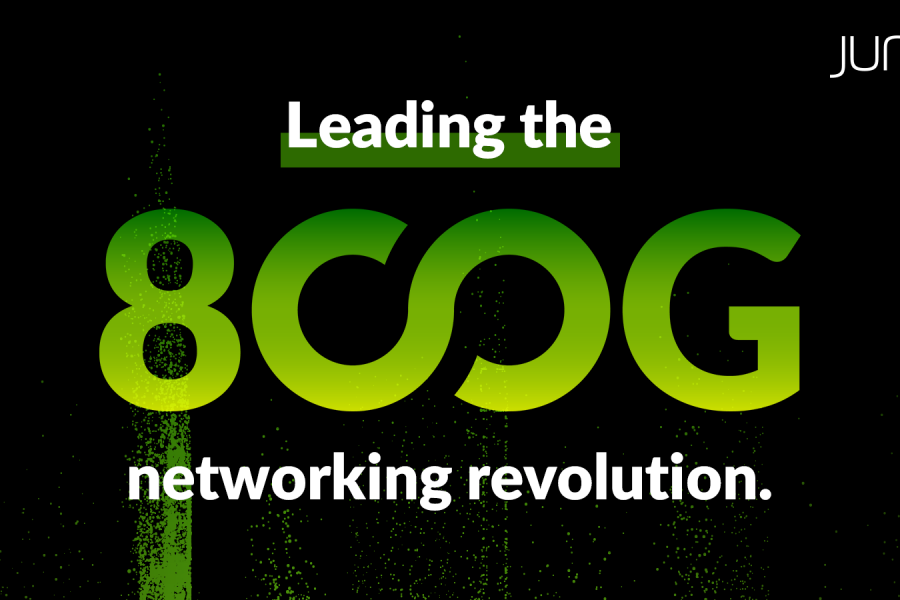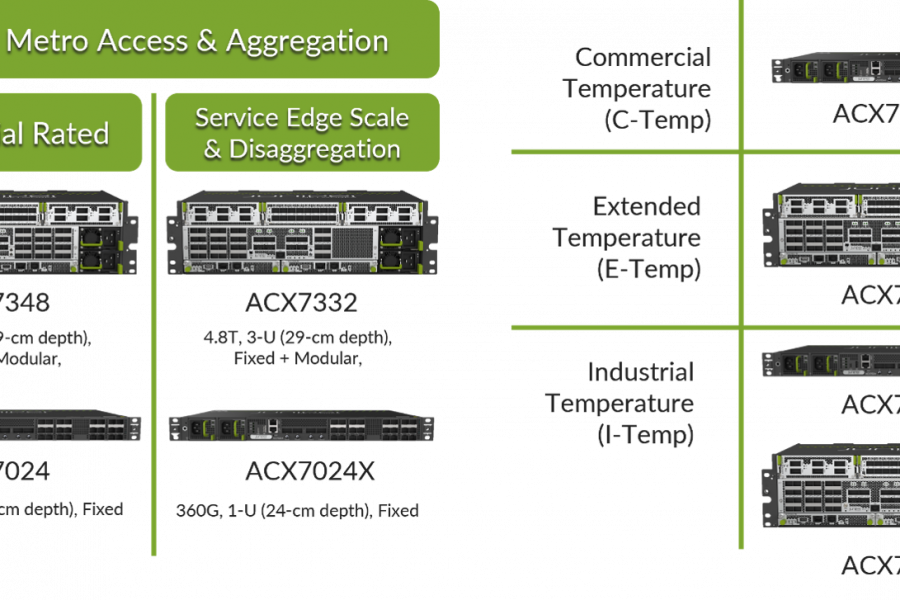Social media applications including Facebook and WeChat first emerged globally in the 3G era, while 4G speeds enabled the explosive growth of short video, mobile live broadcasts, mobile payments, and other applications. In 2019, the first deployments of 5G began to emerge – with networks and nations across the world vying to secure a technological lead in 5G roll-outs.
But 4G is still the primary technology used in large telco networks globally in developed markets and is sufficient to cover a vast majority of personal consumer needs. At present some 80% of 5G application scenarios still originate from the government and enterprise consumer sectors.
Network Carrier Transformation
While 3G and 4G has transformed our lives, 5G has the potential to impact and fundamentally change society. To seize these opportunities in government and enterprise markets, service providers must adjust their business models and abandon traditional, restrictive product development processes to move much faster.
A flexible and digital business platform must be adopted to promote more agile operating models, prioritize multi-partner trials, and accelerate business innovation and time-to-market for the enterprise and consumer services.
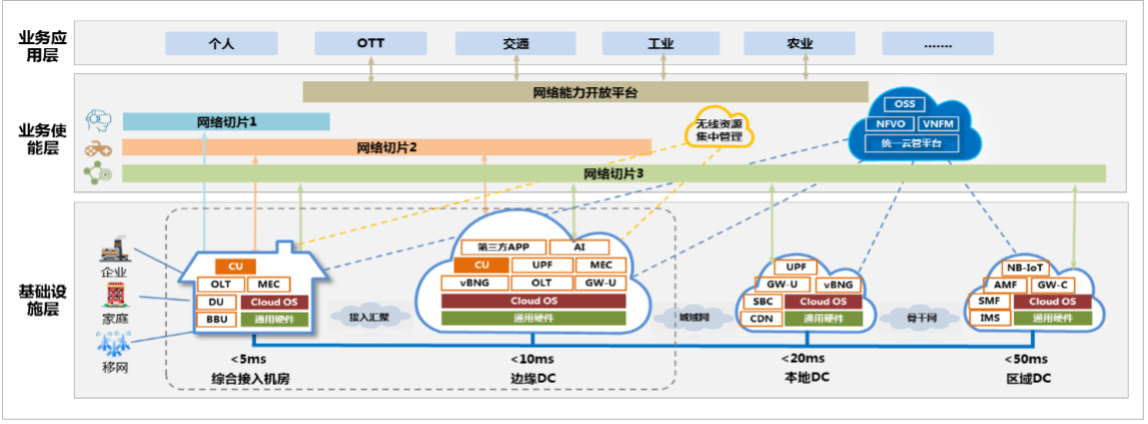
With a vision of synergistic development of “network, application, cloud, edge and consumer” in the age of 5G, Jiangsu Unicom’s parent company China Unicom is now, through transformational cloud-network convergence, focusing on the enterprise market that includes thousands of industries. As the first information access point of the enterprise customers, the edge data center with Multi-Access Edge Computing (MEC) is the key anchor.
Opportunities in 5G+ Smart Parks
Business parks or ‘smart parks’ have a critical concentration of leading-edge technology talent and industries in China, accounting for over 80% of GDP and 90% of innovation in recent years. According to a study by the Qianzhan Industry Research Institute, China’s smart park sector is experiencing a rapid growth phase, supported by digital investment that surpassed nearly USD25billion (RMB160billion) in 2019, and is expected to grow even further by 20% over the next three years.
Open MEC Pilot
Capitalizing on the growing strategic significance of the enterprise market, the top three Chinese service providers in 2020 competed against each other for deployments in multiple industries, but nearly 90% of them were siloed MEC experiments with major IT players like Huawei and Nokia.
However, the service providers themselves are increasingly recognizing that if key anchor, MEC nodes, in the enterprise market continue to be built in a siloed manner, they will conflict their business transformation efforts over the mid and long-term.
As the main operational center of its parent company’s 5GC East China region, Jiangsu Unicom is committed to becoming a one-stop, full-stack technology destination to meet the needs of its government and enterprise customers. At the same time, Jiangsu Unicom is keen to leverage its partners in the wider ecosystem to play critical roles in filling gaps in expertise, technology and solutions they may have.
As such, Jiangsu Unicom joined forced with Juniper Networks, the China Unicom Research Institute and a variety of other ecosystem partners to pilot Open MEC and a cloud-first network (CFN) in its 5G+ Smart Park pilot in December 2020. The diagram below shows the end-to-end 5G+ smart park segmentation model. Cameras and other sensors are connected to 5G CPE, then transported via 5G RAN to a MEC platform for processing. The entire system is integrated with existing smart park IT systems.
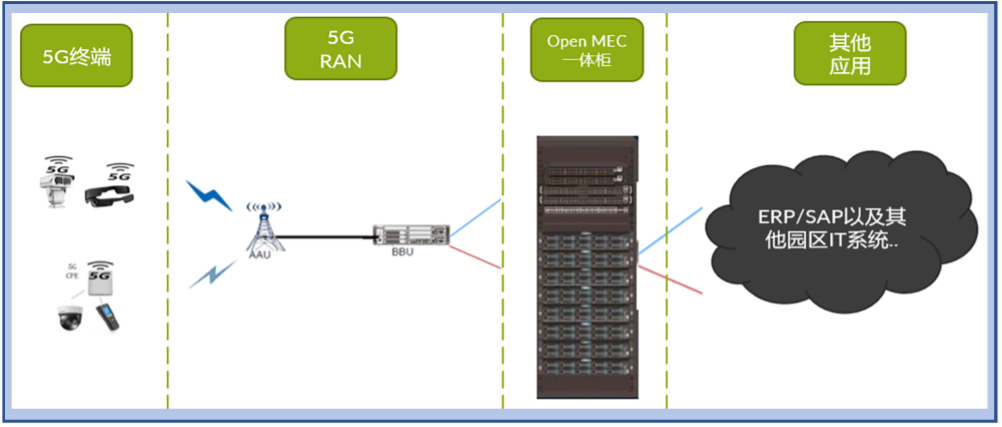
In this strategic pilot, Juniper Networks led the project as the prime integrator and end-to-end solutions consultant. By selecting and leveraging partners across the ecosystem, we successfully built a workable and disaggregated Open MEC cabinet which comprised of 4 components:
-
-
- Open network infrastructure provided by Juniper, including PTX10008 with SONiC – industry first multiple PFE SONiC platform; QFX5200/5210 with SONiC –single PFE SONiC platform; cRPD – industry first container-based routing package; and Tungsten Fabric – industry recognized open source SDN solution
- Open cloud infrastructure provided by Yunex, including Openstack, Kubernetes and MANO systems
- UPF and light 5GC provided by IPLOOK
- AR application with AI capability, provided by ZY-Tech
-
With support from the Jiangsu Unicom NOC team, we inserted and integrated this “co-innovated” MEC into existed RAN and transport networks and demonstrated two identical AI algorithms: face recognition and per region people counting.
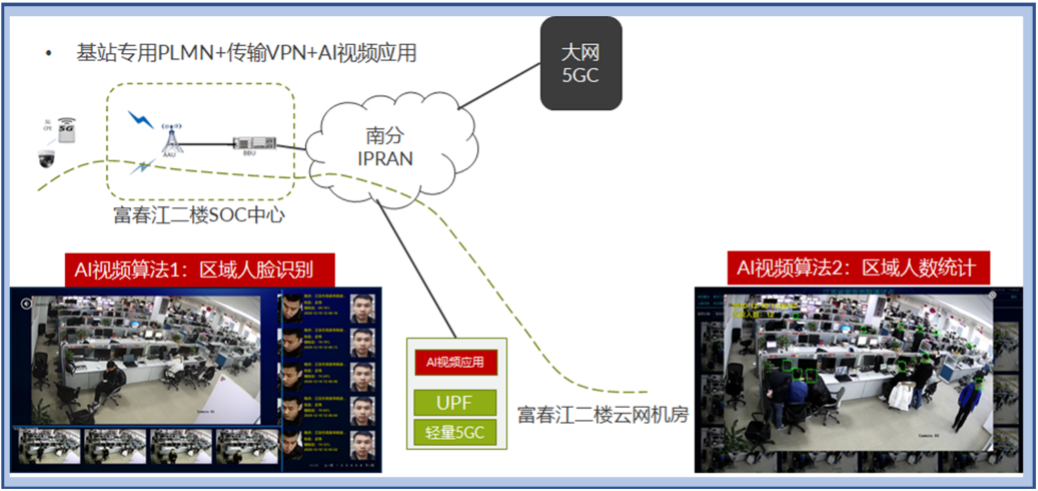
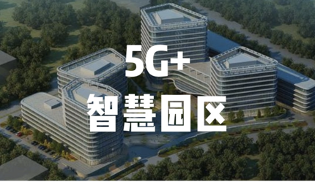
By leveraging open Multi-Access Edge Computing (Open MEC), Compute-First Networking (CFN) and AI technologies, Jiangsu Unicom’s 5G+ Smart Park incorporates government, municipal and carrier data to offer four classical application scenarios to help industrial parks improve modern governance capabilities.
- Smart Security
Video surveillance is the main application of Smart Security. Leveraging 5G+ MEC as well as AI and high-definition video, Jiangsu Unicom’s Smart Park has evolved from being just “able to see” to “seeing clearly” and “understanding what is seen”. - Smart Logistics
In combination with MEC and AI, 5G, featuring higher bandwidth, lower latency and higher stability, effectively addresses the pain-points of modern logistics. For instance, automated guided vehicles (AGVs) achieve precise and effective cargo handling through navigation and traction, based on 5G video fusion positioning, to significantly improve an enterprise’s flexible production intelligence and competitiveness. - Smart Inspection
The adoption of smart inspection, even with robots and drones doing inspections, has become increasingly prevalent. Smart inspections with 5G HD cameras can recognize the readouts of various instruments, precisely sense external environmental information (temperature, smoke and combustible gas etc.), and offer early fire warning, speech recognition and data storage services to accomplish time-consuming tasks such as equipment testing, data collection and defect management in complex and hazardous environments. - Remote Collaboration
In the 5G era, the digital world and the physical world have begun to converge, with time and spatial restrictions dissolving to achieve remote collaboration. Jiangsu Unicom’s Smart Park enables a time- and distance-neutral online collaboration model – allowing the park’s stakeholders to increase operational efficiency by achieving greater connectivity between people, with objects, and with applications.
Digital Transformation Powered by the Cloud Network
Deep convergence of industry scenarios powered by 5G, edge cloud and AI technologies is at the core of new networking infrastructure design and overall enterprise digital transformation.
Evolving from black box testing and integration methodologies to in-house white box development, Jiangsu Unicom has transformed itself from externally led development of its 3G/4G networks, to internally led development for the 5G era. This is evident from the hierarchical decoupling technology demonstrations of the pilot program and Jiangsu Unicom’s multi-discipline and multi-department exploration and collaboration.
Juniper Networks is proud to support Jiangsu Unicom’s 5G+ Open MEC Smart Park, alongside the China Unicom Research Institute and its ecosystem partners. Open MEC hierarchical decoupling for lightweight, open network/cloud foundations are utilized, enabling applications such as lightweight user-plane function for 5GC/UPF and EPC/IMS. In addition, the carrier network’s base stations and transmissions are reused to achieve PNI-NPN based on private PLMN/VPN, ideal for the smart park’s various use cases.
In comparison with siloed edge clouds, Open MEC offers superior CAPEX and OpEx management through more agile, customized, scenario-based deployments.

